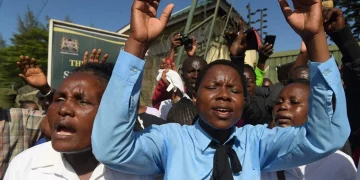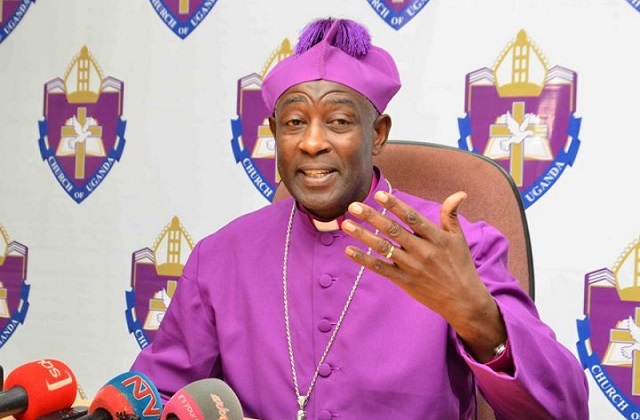With 35 million youths raised in Christian families projected to disaffiliate from Christianity by the year 2050, youth ministry leader Greg Stier believes churches can’t settle for simply slowing down the bleeding.
“How about not just slowing down the bleeding, what if there was a revival that flipped those stats?” he asked. “That is what we are praying for. How do we flip the switch?”
The 131-page report, titled The Great Opportunity, pulls together the data of numerous studies to examine millennial attitudes toward religion and relies most heavily on four major research efforts.
The report was completed in a collaboration between Pinetops Foundation and The Veritas Forum.
The report’s authors and Greg Stier, founder of youth ministry Dare 2 Share, the massive disaffiliation trend over the next 30 years will represent the largest missional opportunity in US history.
But in order to respond to the trend, Stier believes that churches need to reimagine the way they do youth ministry
“If you were to go back to the retention rate of Gen X from 20 years ago, that would slow down [disaffiliation] to 20 million young people,” Stier told The Christian Post.
“That’s more than the First and Second Great Awakenings and all the Azuza Street Revival and all of Billy Graham’s converts combined.”
The report relies on research efforts like Pew Research Center’s Religious Landscape Study (2007-2014), the Baylor Religion Survey (2007 to 2011), a September 2016 survey from the Public Religion Research Institute and the Gallup Annual Religion Surveys (1992-2016).
“Based on those primary data sources, we built out religious switching scenarios for the next 30 years, using the most up-to-date switching and attitudinal data, harmonizing assumptions across primary data sources,” the report explains.
Our projections are based on modeling techniques akin to what one might use in a professional context for market forecasts. They are certain to diverge over time from reality, and we have called out our assumptions wherever we can.”
The report uses compiled data to project the decline in Christianity for three different scenarios: a “base case” (if trends continue in line with how they are), “worst-case scenario” (if trends worsen) and a “better case scenario” (if trends improve to Generation X rates).
The report estimates through its “base case” scenario that as many as 35 million youths raised in the Christian homes will disaffiliate from the faith by 2050.
Additionally, Christianity in America will make up just 59 per cent of the country’s population by 2050, compared to 73 per cent today. Meanwhile, the “base case” indicates that the population of the religiously unaffiliated will double to 30 per cent of the total population in 2050.
Taking into account a “worst-case scenario,” the report projects that as many as 42 million people raised in Christian homes will disaffiliate from Christianity by 2050 while the Christian population will decrease to 54 per cent and the unaffiliated population will increase to 35 per cent.
Taking into account a “better-case scenario,” the report estimates that 26 million people raised in Christian families will disaffiliate by 2050. Then, Christians will comprise 64 per cent of the nation’s population by 2050.
“It is the largest and fastest numerical shift in religious affiliation in the history of this country,” the report stresses.
“Even in the most optimistic scenarios, Christian affiliation in the US shrinks dramatically, and in our base case, over 1 million youth at least nominally in the church today will choose to leave each year for the next three decades. 35 million youth raised in families that call themselves Christians will say that they are not by 2050.”
It calls for a number of things, including a doubling or tripling of church planting efforts in the United States. The current rate of church planting will not be enough to “address population growth and anticipated church closures of older congregations.”
At least 215,000 churches will need to be planted by 2050 just to maintain the status quo.
The report also calls for churches to “transform youth discipleship,” contending that the youth ministry models of the last 50 years are no longer effective.
Despite its findings, Stier said he is “thrilled” for the report because of the opportunity presented to the Church.
He’s praying for another awakening. “Revival is something God brings about but it can change paths pretty quickly. The first Great Awakening happened when America was a pretty dark place before we were the United States,” he noted.
“Jonathan Edwards, his revival, had been chiefly among the young. So it was a student youth movement that prepared us to become the United States. What if it was a student youth movement that would bring us back to our roots and unite this nation and transform it from the inside out?”
Stier said that opportunity lies with the fact that the churches in the US outnumber high schools and middle schools by almost a five-to-one ratio. He stressed that churches need to be “fully onboard” when it comes to mobilizing and equipping youth to become missionaries on their campuses in order to reach their peers with the Gospel.
“Youth ministry needs to be re-engineered to be Gospel-advancing and disciple-multiplying,” he stressed. “It is not about meetings but about the mission. Young people are longing for a cause that matters. So they need to be equipped and youth leaders need to be equipped to equip them.”
“There is nothing wrong with games and all that stuff, but they (youth groups) need to take it serious about the mission that God has put before us. I think we have to have a higher standard for youth ministry than fun, games, pizza and a 10-minute lesson.”
On October 12, Dare 2 Share will host its third annual Dare 2 Share Live, a simulcast revival event that incorporates satellite sites across over 100 cities worldwide. At the event, students are trained on how to share the Gospel with their friends and communities.
“Each of the cities’ youth groups come together and they’re equipped to share the Gospel,” Stier said.
Dare 2 Share will host a seminary in October to help equip youth leaders to live out the call of having a mission-focused youth ministry.
“We are trying to get other organizations in on it. It can’t just be Dare 2 Share. We are trying to get entire denominations and parachurch organizations working with us in this movement,” he explained.
“It is not going to be one ministry that turns the tide but we are hoping that Dare 2 Share Live provides the sizzle. It will be 100-plus cities from Anchorage, Alaska, to Puerto Rico where students will be simultaneously trained in a single day. The kids we’ll be sending out will have thousands of Gospel conversations happening across the nation.”







































Discussion about this post